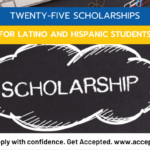Unlocking Futures: My Journey & Guide to Scholarships for Native American Students
I remember standing there, a high school diploma clutched in my hand, a wide smile plastered on my face, but with a knot of worry tightening in my stomach. The dream? College. The reality? A mountain of tuition fees that felt insurmountable. For many young people, that feeling is universal, but for students from Native American communities, the path can sometimes feel even more complex, layered with unique challenges and often, a lack of readily available information.
That’s where my journey began – not just my own, but the journey I’ve been privileged to witness and help navigate for countless others. I’ve seen firsthand the incredible talent, resilience, and ambition within Native American students, and I’ve also seen the look of relief and pure joy when they realize: "Yes, there are scholarships for Native American students, and they can help me reach my dreams."
This isn’t just an article; it’s a story, a shared experience, and a guiding hand for anyone looking to unlock those same opportunities. So, let’s pull up a chair, and I’ll tell you what I’ve learned.
The Whispers of a Dream & The Mountain of Cost
For generations, education has been a cornerstone of our communities. The desire to learn, to grow, to bring knowledge back to our people is deeply ingrained. But let’s be honest, the cost of higher education today is astronomical. It can feel like a gatekeeper, a barrier that stands between a bright mind and a brighter future.
I remember talking to a young woman, Sarah, from the Navajo Nation. She was brilliant, topping her class, and dreaming of becoming an engineer. But every time she looked at university brochures, she’d sigh. "It’s just too much," she’d say, her shoulders slumping. "How can I ever afford it?"
Her story, and countless others like it, ignited something in me. I realized that while the desire to learn was strong, the knowledge of how to fund that learning was often missing. That’s when I dove headfirst into understanding the world of Native American scholarships and indigenous financial aid. What I discovered was a vibrant, supportive network designed specifically to empower Native American students like Sarah. It wasn’t always easy to find, but it was there, waiting.
More Than Just Money: The Heart of Native American Scholarships
Before we dive into where to find these scholarships, it’s important to understand what they represent. These aren’t just handouts; they are investments. Investments in individuals, yes, but also investments in the future of our tribes, our cultures, and our collective well-being. Many tribal scholarships and grants are designed not only to cover tuition but also to support students who will return to their communities and use their education to build a better future.
Think of it this way: when you apply for a scholarship for Native American students, you’re not just asking for money. You’re telling a story. You’re sharing your heritage, your aspirations, and your commitment to your community. And that’s a powerful narrative that many organizations are eager to support.
Where to Begin Your Treasure Hunt: Finding the Right Scholarships
Finding the right scholarship can feel like a treasure hunt, but I promise you, the treasure is real and waiting. Here are the maps I’ve used and shared:
1. Start with Your Roots: Tribal Resources
This is often the first, and most crucial, stop. If you are an enrolled member of a federally recognized tribe (or sometimes state-recognized), your tribe likely has its own tribal scholarships or education departments.
- Your Tribal Education Office: Contact them directly! They are a goldmine of information. They often have their own specific scholarships, can guide you on other Native American education funding opportunities, and may even help you with application processes.
- Check Tribal Websites: Many tribes list their educational programs and scholarships online. Don’t just look for "scholarships"; also search for "education department," "higher education," or "youth programs."
I’ve seen students secure substantial funding just by making that initial call to their tribal office. It’s a connection that often goes beyond financial aid, offering mentorship and community support as well.
2. National Powerhouses: Big Names in Indigenous Education
There are incredible national organizations dedicated solely to supporting Native American students. These are often the biggest sources of grants for Native American students and offer a wide range of programs.
- American Indian College Fund (AICF): This is one of the giants. They provide scholarships to Native American and Alaska Native students attending tribal colleges and universities, as well as mainstream institutions. Their website is a fantastic resource for various programs.
- American Indian Science and Engineering Society (AISES): If you’re interested in STEM (Science, Technology, Engineering, Math), AISES is your go-to. They offer numerous STEM scholarships for Native American students, mentorship, and networking opportunities.
- Catching the Dream (formerly Native American Scholarship Fund): This organization focuses on helping Native American students attend colleges and universities across the country, with an emphasis on students committed to returning to serve their communities.
- Indian Health Service (IHS) Scholarships: For those pursuing health professions, IHS offers scholarships in exchange for service in Native American communities after graduation. It’s a powerful way to give back while funding your education.
- Bureau of Indian Education (BIE): While primarily supporting BIE-funded schools, they also have programs and resources for higher education.
These organizations often have multiple deadlines throughout the year, so it’s wise to visit their websites regularly and sign up for their newsletters.
3. Beyond the Obvious: University & Private Programs
Don’t limit your search to just Native-specific organizations. Many universities and private foundations also offer scholarships.
- University-Specific Scholarships: When you apply to a university, check their financial aid page specifically for Native American student support. Many institutions, especially those with significant Native American student populations or Native American studies programs, have dedicated scholarships. Sometimes they’re called "diversity scholarships" but explicitly include Native American students.
- General Scholarship Search Engines: Websites like Fastweb, Scholarships.com, and College Board’s BigFuture Scholarship Search allow you to filter by ethnicity, major, GPA, and more. Use keywords like "Indigenous scholarships," "Native American grants," or "tribal college scholarships" in your searches.
- Community Foundations & Local Organizations: Don’t overlook smaller, local opportunities. Your local community foundation or even local businesses might offer scholarships. These often have less competition.
Crafting Your Story: Making Your Application Shine
Finding the scholarships is half the battle; crafting an application that stands out is the other. Remember, you’re not just a number; you’re a person with a unique story and incredible potential.
1. The Essay: Your Voice, Your Journey
This is where you truly shine. Scholarship committees want to hear your voice.
- Authenticity is Key: Don’t try to be someone you’re not. Share your experiences, your challenges, your aspirations, and how your Native American heritage has shaped you.
- Connect to Your Community: Many scholarships for Native American students value your connection to your tribe and your plans to contribute to its future. Talk about how your education will benefit your people.
- Answer the Prompt: Read the essay prompt carefully. If it asks about a challenge you overcame, tell that story, not a generic one about your dreams.
- Proofread, Proofread, Proofread: A well-written, error-free essay shows attention to detail and respect for the committee’s time. Ask a trusted teacher, mentor, or family member to review it.
I once read an essay from a young man who wrote about learning traditional weaving from his grandmother. He connected the intricate patterns of the rug to the complex challenges he wanted to solve in engineering. It was beautiful, authentic, and unforgettable. He got the scholarship.
2. Recommendation Letters: Your Champions Speak
Choose people who know you well and can speak genuinely about your character, abilities, and potential.
- Teachers: Especially those in subjects where you excel or where you’ve shown significant growth.
- Counselors: They often have a holistic view of your academic journey and extracurricular involvement.
- Community Leaders/Elders: If you’ve been involved in tribal activities, cultural programs, or community service, someone from those areas can provide a powerful perspective on your commitment to your heritage.
- Give Them Time & Information: Don’t ask for a letter at the last minute. Provide them with your resume, the scholarship requirements, and a brief summary of why you’re applying and what you hope to achieve.
3. Academic Records & Transcripts: Showing Your Dedication
While grades are important, many scholarships for Native American students look beyond just GPA. They often consider your course load, your improvement over time, and your commitment to learning. Always submit official transcripts as requested.
4. Proving Your Heritage: Tribal Enrollment
This is a non-negotiable for most Native American scholarships. You will almost certainly need to provide proof of tribal enrollment or descendancy from a federally recognized tribe. Make sure you have these documents ready and understand the specific requirements for each scholarship. Don’t wait until the last minute to track down your CIB (Certificate of Indian Blood) or tribal enrollment card.
5. The FAFSA: Don’t Skip This Step!
Even if you think you won’t qualify for federal aid, fill out the Free Application for Federal Student Aid (FAFSA). Many scholarships, even merit-based ones, require it as a baseline for understanding your financial need. It opens doors to more opportunities, including state grants and some institutional aid.
Common Pitfalls and How to Avoid Them
The path to scholarships isn’t always smooth. Here are some bumps I’ve seen students hit, and how to steer clear:
- Missing Deadlines: This is the most common reason for rejection. Create a spreadsheet or use a calendar to track all deadlines. Set reminders!
- Not Customizing Applications: Copy-pasting essays is a huge no-no. Each scholarship committee wants to feel like you’re talking directly to them. Tailor your essay and responses to fit their mission and values.
- Giving Up Too Soon: You might not get the first one, or the second, or even the tenth. Scholarship searching is a numbers game. Keep applying! Every "no" brings you closer to a "yes."
- Ignoring Small Scholarships: A $500 scholarship might not sound like much, but several small ones can add up quickly and make a big difference in covering books, supplies, or living expenses. Less competition often means a higher chance of winning.
- Not Asking for Help: Your school counselors, teachers, tribal education officers, and even family members are resources. Lean on them!
Beyond the Application: What Happens Next?
Once you’ve sent off your applications, the waiting game begins. It can be nerve-wracking, but try to be patient.
- Interviews: Some scholarships require an interview. This is another chance to tell your story, show your personality, and express your passion. Practice answering common questions and be ready to talk about your goals and how you connect with your heritage.
- Gratitude: If you are awarded a scholarship, always send a thank-you note to the organization. It’s a small gesture that goes a long way and builds goodwill for future students from your community.
- Stay Connected: Many scholarship organizations offer ongoing support, mentorship, and networking opportunities. Embrace these connections; they can be invaluable throughout your academic and professional journey.
My Final Words of Encouragement: You Are Capable
I’ve seen the transformation. I’ve seen the bright-eyed high school graduate, burdened by financial fears, turn into a confident college student, thriving because of the support they received. Sarah, the young woman I mentioned earlier, did get her engineering degree. She’s now working with her tribe, helping to develop sustainable energy solutions. Her dream became a reality, powered by her brilliance and the scholarships for Native American students that believed in her.
Your education is an investment in yourself, your family, and your people. Don’t let the cost be a barrier. The resources are out there. The support is available. Start your search today. Be diligent, be persistent, and most importantly, be authentically you. Your story is powerful, and there are organizations eager to help you write its next chapter.
The future is waiting, and it’s calling for you. Go forth, seek those scholarships, and build the future you envision.



